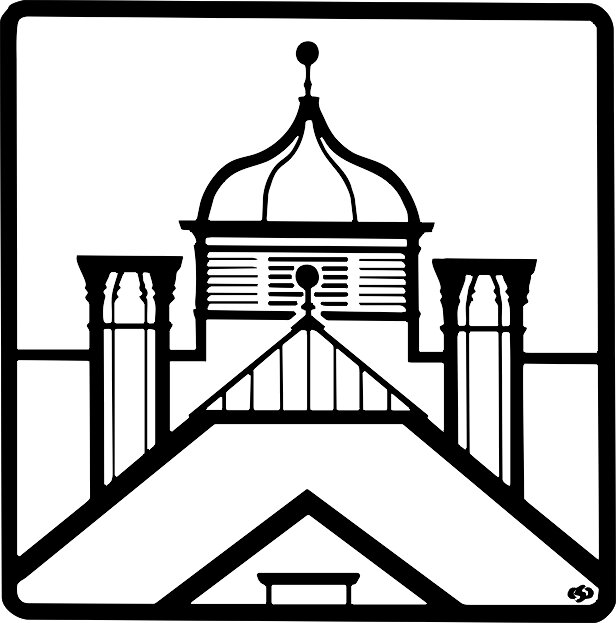The W. and L.E. Gurley Company
William Gurley and his younger brother Lewis E. Gurley founded the W. and L.E. Gurley Company in Troy, N.Y., in 1852. At that time the company specialized in manufacturing and supplying precision instruments for civil engineers and surveyors. The company continues today as Gurley Precision Instruments, and still operates in the building it constructed in 1862 at the corner of Fifth Avenue and Fulton Street in Troy.
The W. and L.E. Gurley Company evolved from several similar earlier businesses. These include firms started by Jonas H. Phelps and Benjamin, Julius and Oscar Hanks. Lewis E. Gurley was once apprenticed to Phelps, while William was a foreman with Hanks. William graduated from Rensselaer Polytechnic Institute in Troy in 1839 and Lewis was an 1851 graduate of Union College in Schenectady, N.Y. Phelps started his own firm in 1838. In 1845 he partnered with William Gurley as Phelps & Gurley. Lewis joined this firm in 1851, and both brothers became partners with Phelps in the firm Phelps & Gurleys. In 1852 they took over the business, then operating at 319 River Street, and launched the W. and L.E. Gurley Company.
Phelps and Gurley advertisement
W. & L.E. Gurley advertisement
They briefly continued at River Street (this building was demolished in 1973 during Troy’s “urban renewal” phase). The site of the present W. & L.E. Gurley factory was established in 1852 when the Gurleys bought the Oscar Hanks property at the corner of Fifth and Fulton and moved from River Street. This building was lost in the great Troy fire of 1862. The present building was constructed in less than a year. (A later addition to the east across the alley was demolished for a parking lot.) Originally the ground floor held retail establishments, and they rented out the third and fourth floors to other manufacturers. The company soon expanded to take up the entire building. The handsome structure is U-shaped around a courtyard, allowing natural light into the factory spaces on all sides. A foundry was once located on the ground level on the north side.
The firm continued to manufacture surveyor’s compasses, theodolites, transits, leveling instruments, goniometers, air pumps, electrical machines and “apparatus to illustrate the principles of natural philosophy.” The company was a leader not only in technology, but also in management. It operated by departments, with each department producing different specialized components, which were then assembled into the final product. Most of the other instrument companies of the day did not work that way; a single skilled workmen produced each individual instrument by himself, which took much longer and cost more. Gurley was able to produce high quality instruments but charged only half as much as their competition.
Nelson Gurley, Westside
The Gurley enterprise was fortunate to have the life-long services of Edward Arms, who was a mechanical genius and eventually became the company’s chief engineer. He was hired in 1862 and worked there until 1934 – a remarkable 72-year span. In this unprecedented length of time, Arms dedicated himself to the improvement of surveying instruments and their manufacture, and he also managed to graduate from RPI in 1869. Arms was particularly interested in the refinement of the circular dividing engine (the Burden Iron Works Museum has one of his dividing engines in our collection).
Nelson-Gurley Rear
Over time Gurley diversified into making thermometers and other testing equipment. They contributed precision instruments for both World Wars and began manufacturing gyroscopes, sextants, star trackers and precision guidance equipment for guided missiles and space exploration during the Cold War and beyond. Today, they are best known for their optical encoders, which are used to measure and control speed for medical instrumentation, electronics, robotics and more. They are also leaders in hydrological instruments, paper testing instruments and precision optographic instruments. The precision of their products has led to two standard units of measure called “Gurley units.”
Gurley remained a family-operated business until the First World War, when professional managers were brought in. The company was acquired by Teledyne Corporation in 1968. Teledyne sold the company to local investors in 1993 and it is now known as Gurley Precision Instruments, Inc. It is still located on the ground floor of the Gurley Building in Troy, and also operates in the building across Fulton Street. The rest of the 1862 building holds RPI’s Lighting Research Center and other school offices and labs.
This article was written by Suzanne Spellen and Gary Nelson, and edited by Steve Muller


